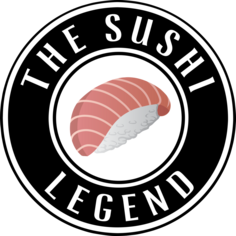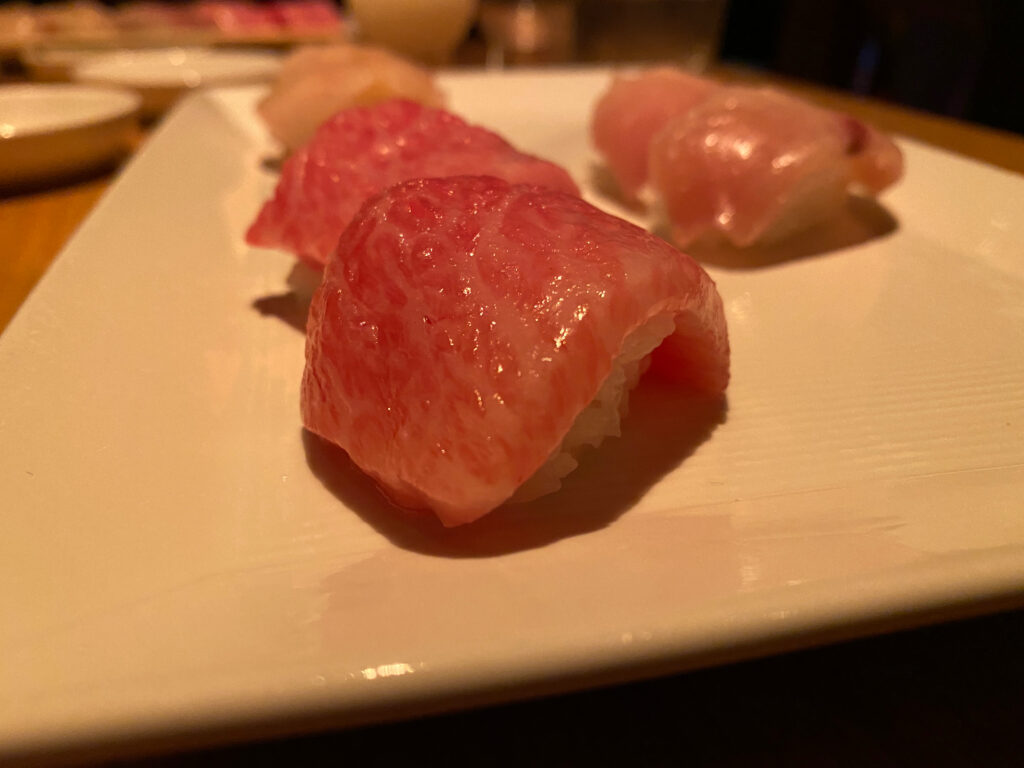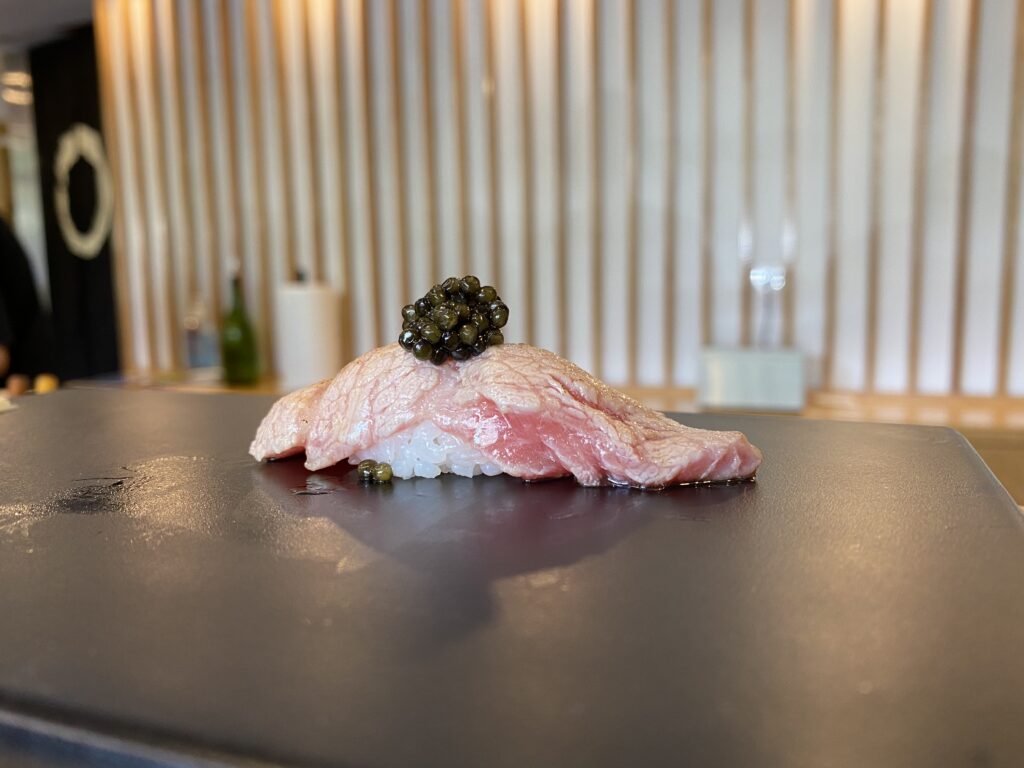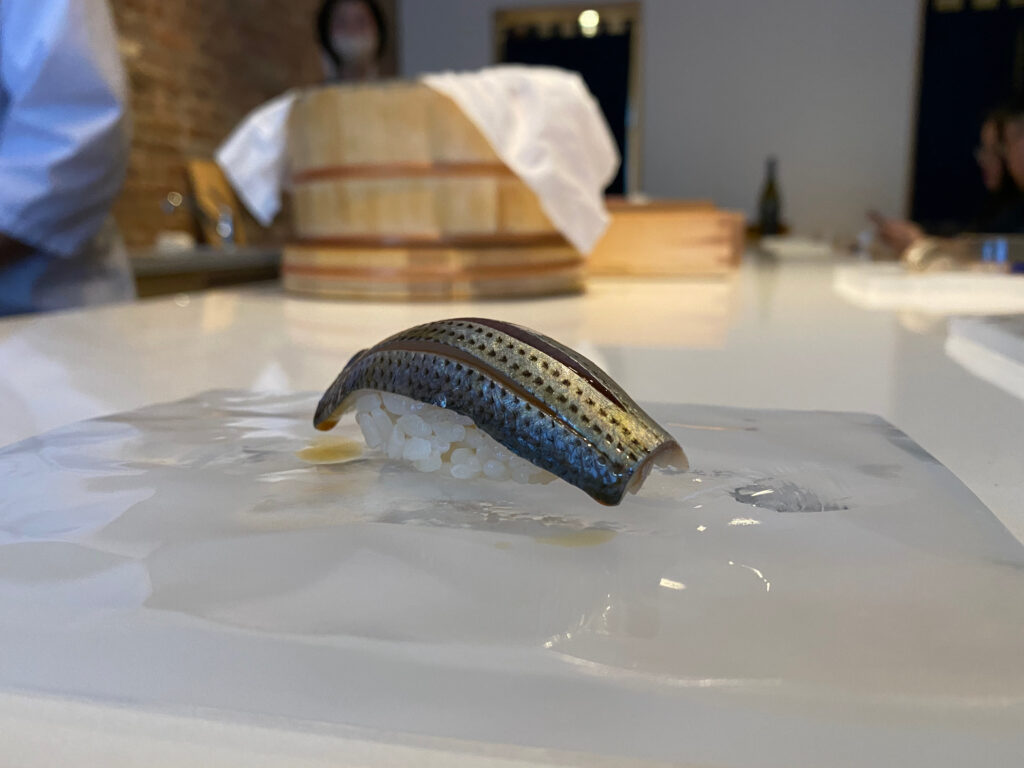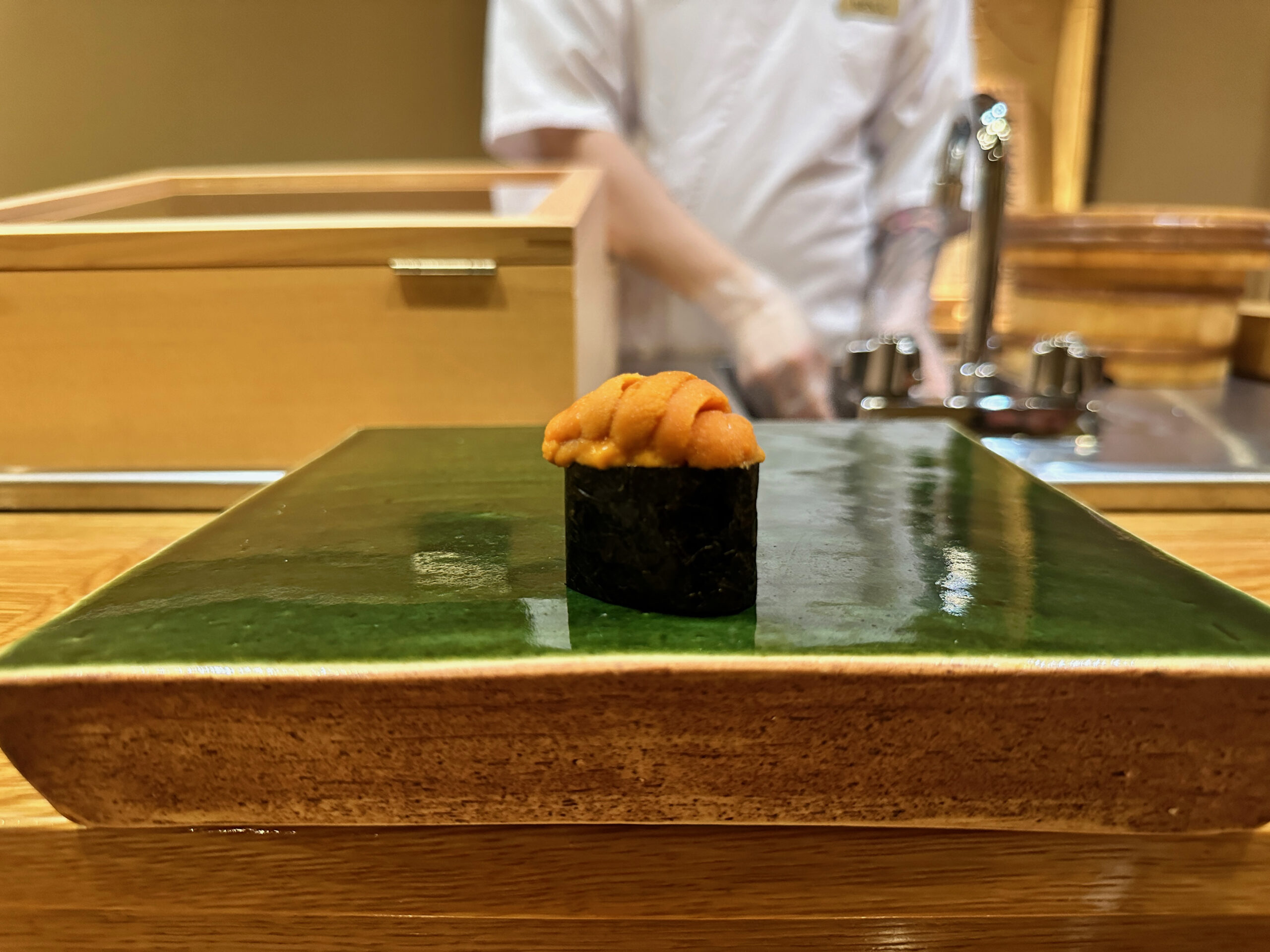 Can a chalkboard omakase be reformed?
Can a chalkboard omakase be reformed?
I have no clue, but Sushi Ouji in SoHo is the first to try.
You see, six months ago, Sushi Ouji had a chalkboard out front. That’s usually an immediate pass. Don’t blame me, blame the chalkboard lobbyists. They’re everywhere.
But a funny thing happened recently. It disappeared. Poof. As if to say, “please try us mr sushi legend. We’re not what you think”.
Ok fine. It couldn’t be worse than nearby Genki Omakase.
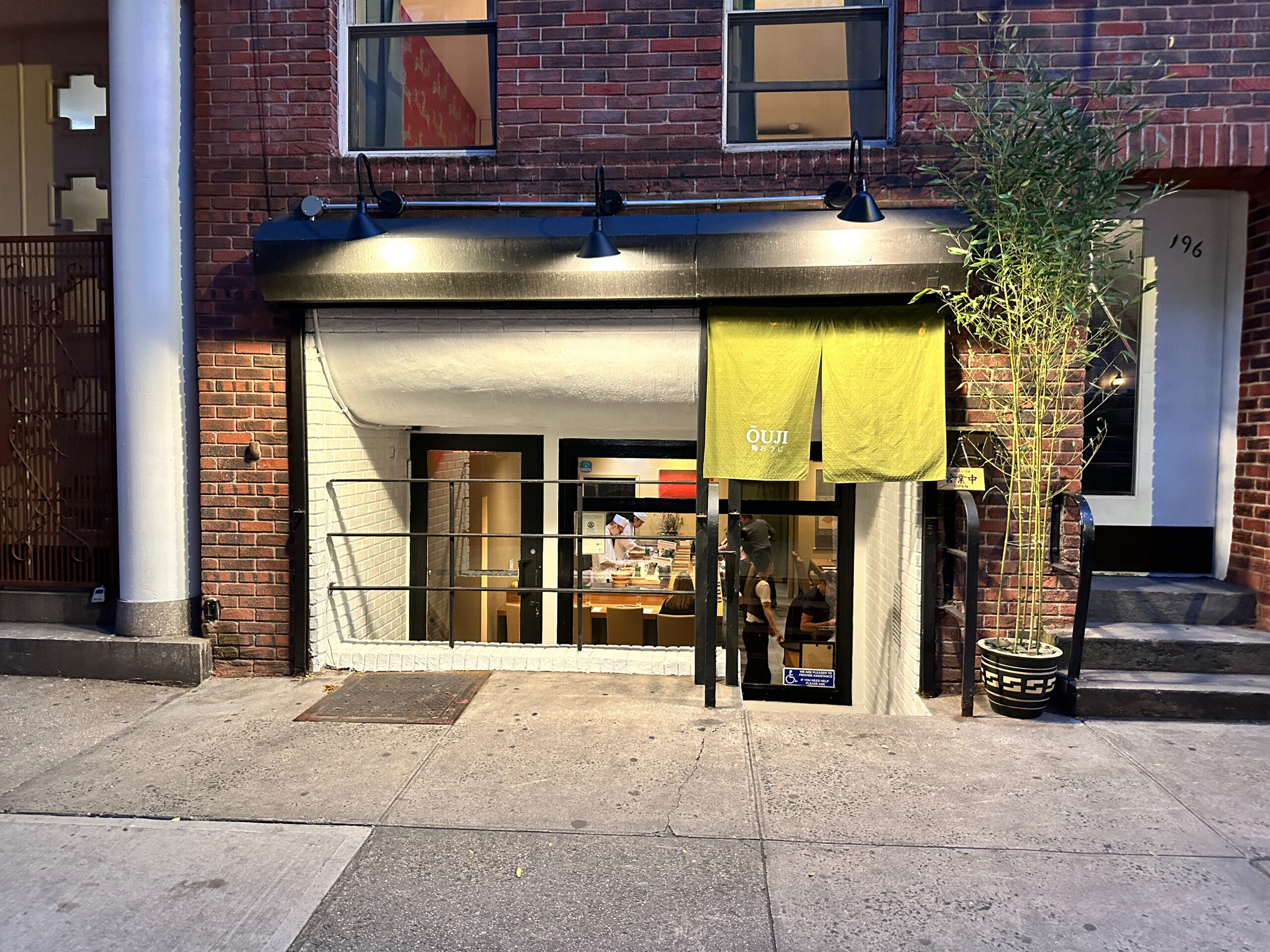
Sushi Ouji used to have a chalkboard out front. It doesn’t anymore.
Ouji is located on Prince in something called West SoHo. My brain is 80% noodle – blame the newborn – but pretty sure that’s the genesis of the name (Ouji means Prince in Japanese).
It’s just between two of the best streets in the city, Macdougal and Sullivan (tell me that doesn’t sound like some ritzy clothier).
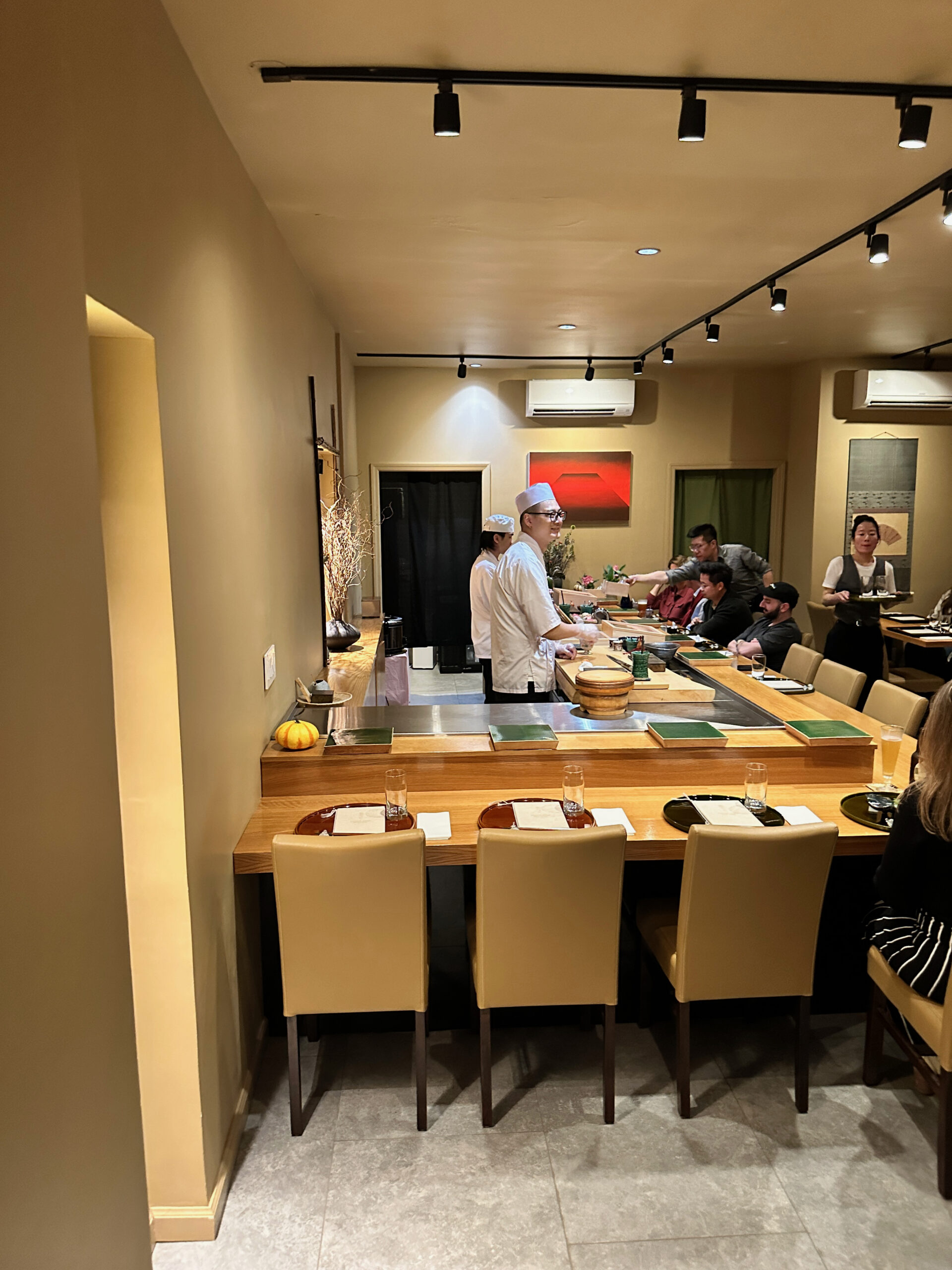
Inside Sushi Ouji
The Omakase is $129 for 14 courses
I suspect that causes some problems. It’s too expensive for the Shiki/genki/insert name here chalkboard omakase crowd, but not quite quality enough for the traditional crowd that may prefer Sushi Ikumi around the corner.
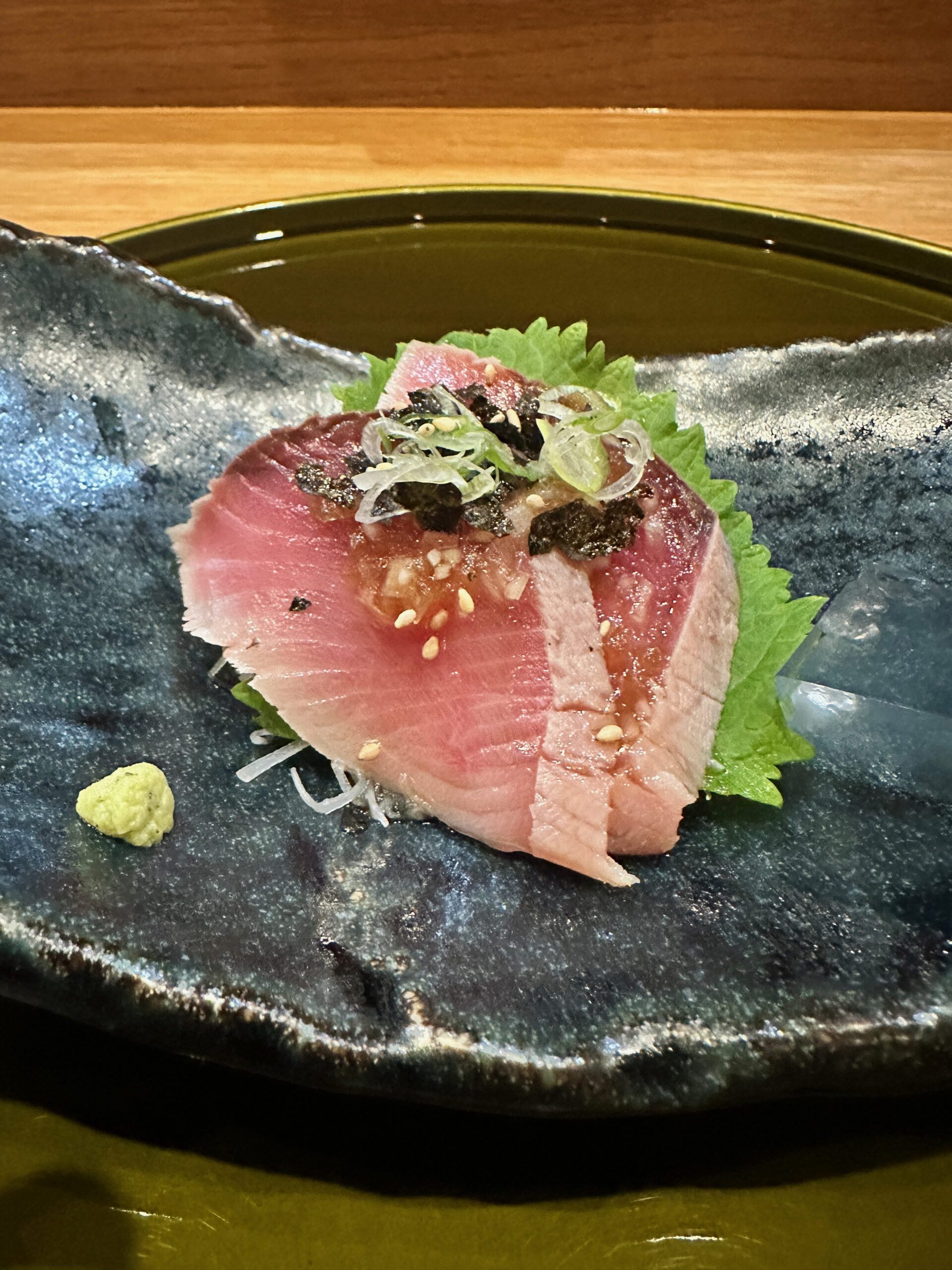
1:
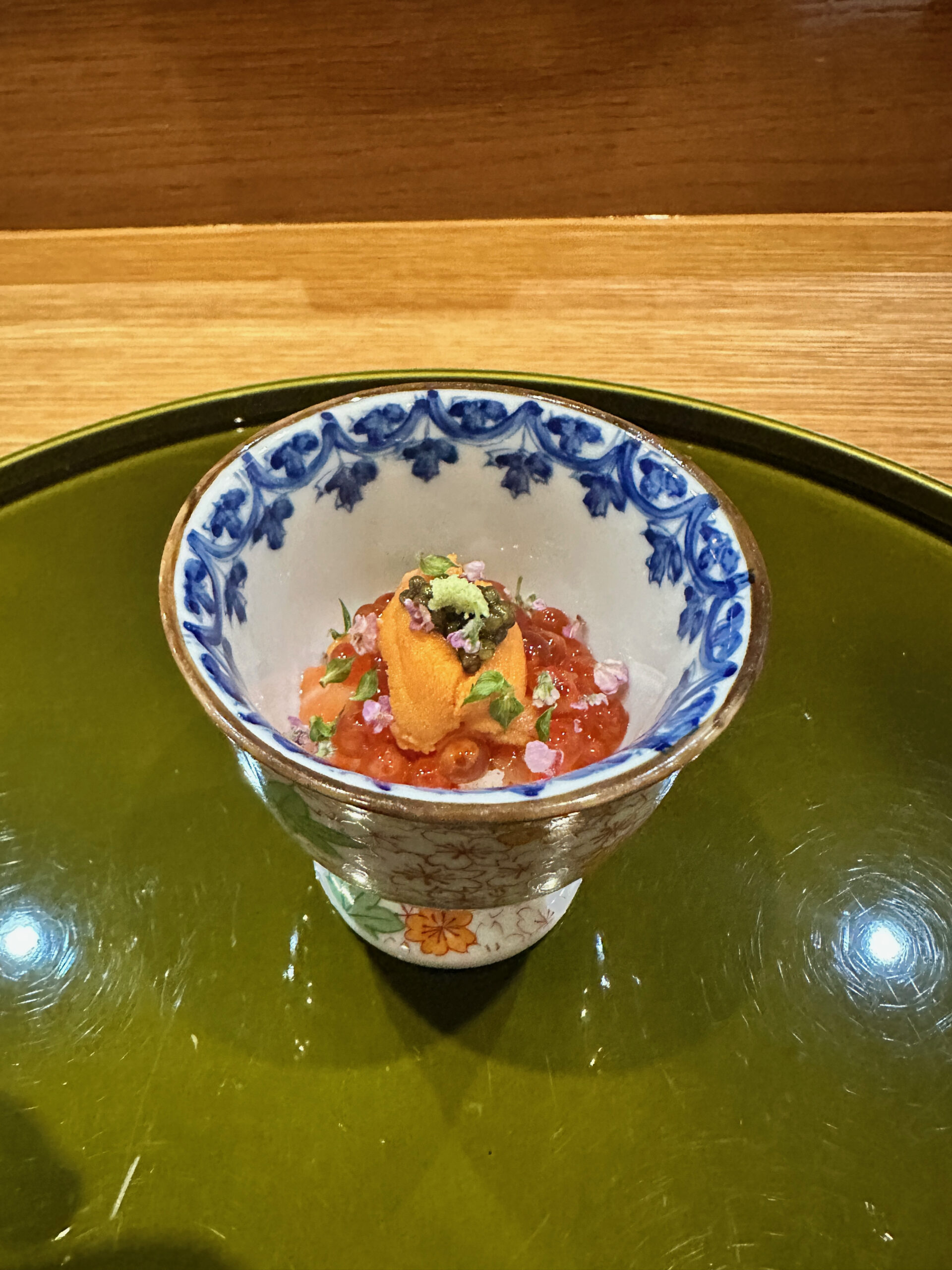
2: Uni, Ikura, Sake (salmon), two kinds of shari (didn’t catch the names but interesting move to mix them together), caviar (unnecessary IMO) and a few flowery decorations
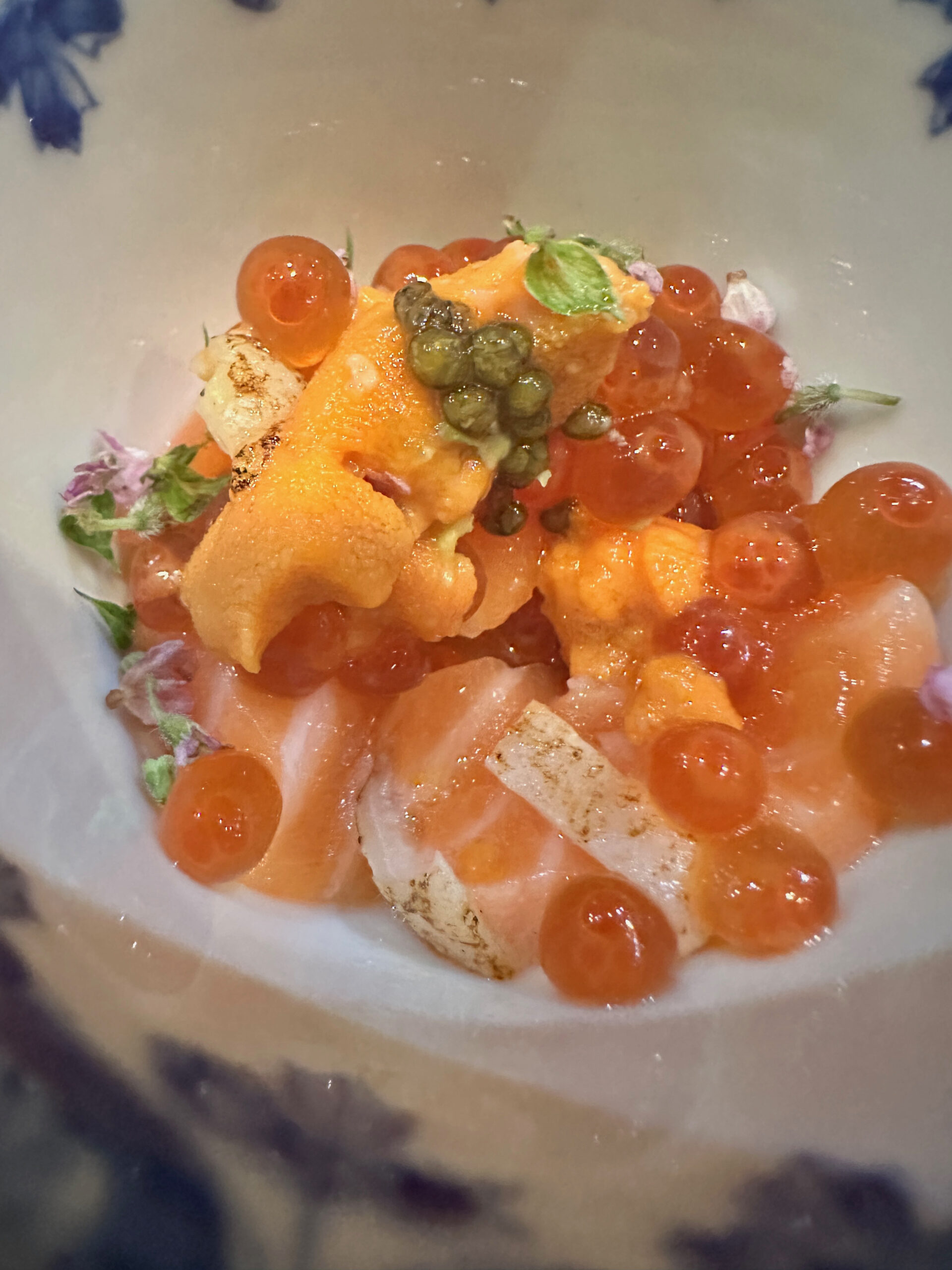
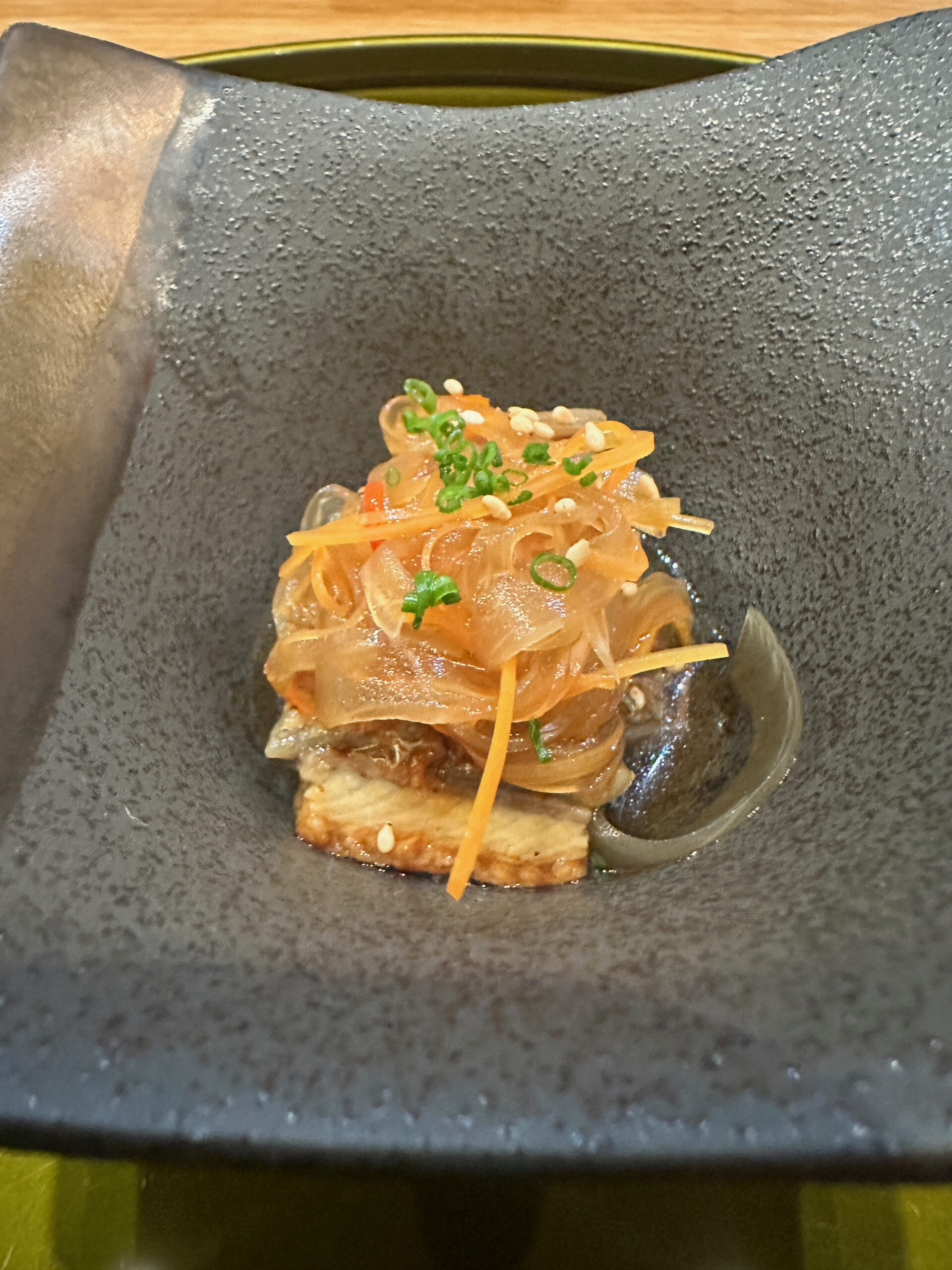
3:
I realized quickly that Ouji’s omakase was substantially – and positively – different than most in this price point. The anago above was served early and simmered (Nimono), unlike most spots, where its served late (traditional) and blowtorched (not traditional).
The madai was also illustrative. As a shiromi (white-fleshed fish) prone to a more, uh, muted taste, lesser sushiya will mask sub-par ingredients will all sorts of toppings. Not here. And yet, deliciously simple.
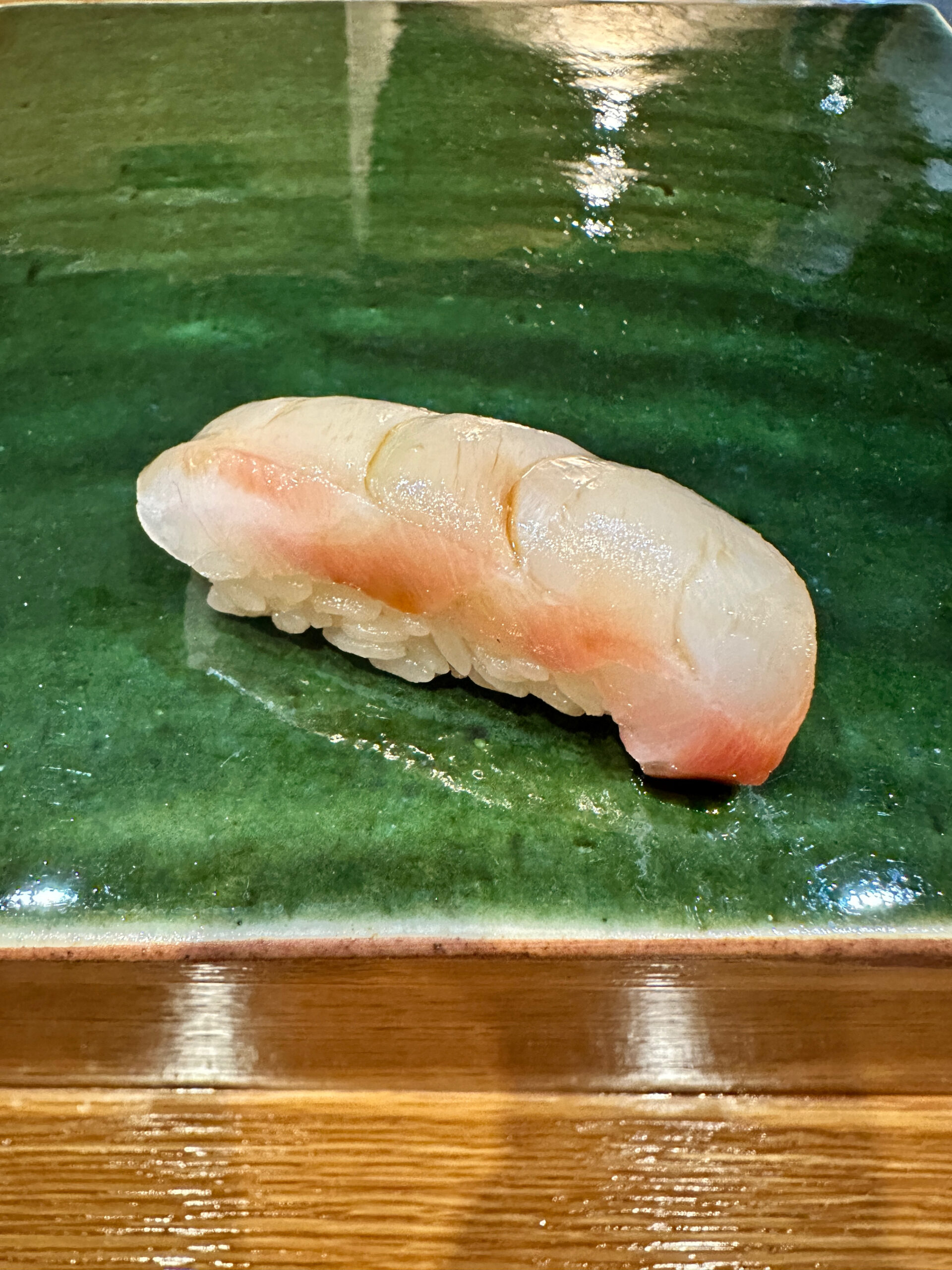
4: Madai
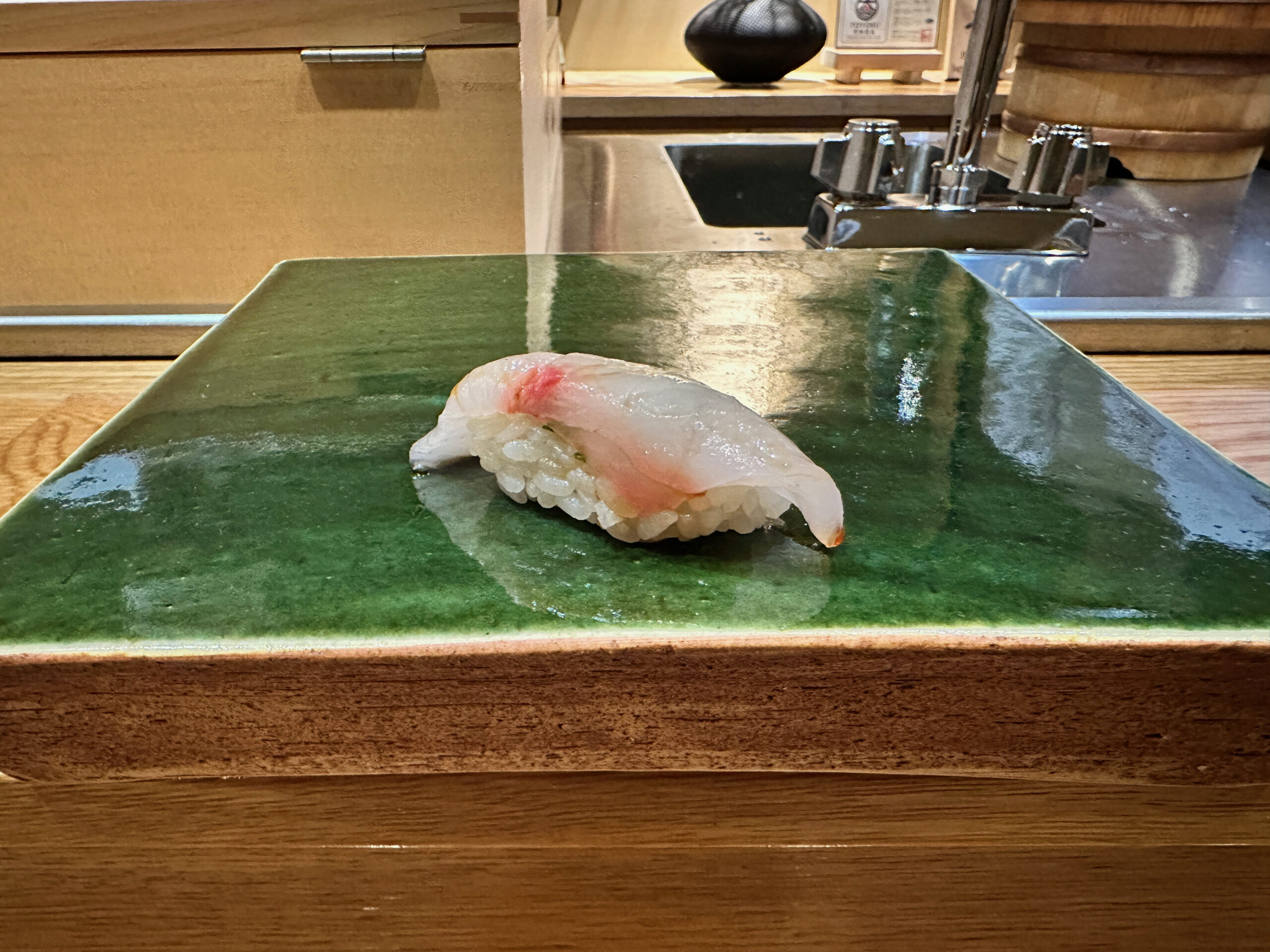
5: Kanpachi
The quality of the ingredients are high, a byproduct of their source: Japanese waters. Of course, most sushiya these days claim they bring in everything from Japan, even when the fish are routed there after being caught elsewhere. At Ouji, the claim passes muster/mustard (zero clue which). For instance, the Kanpachi is from Kagoshima, and hte Shima Aji below from Ehime prefecture.
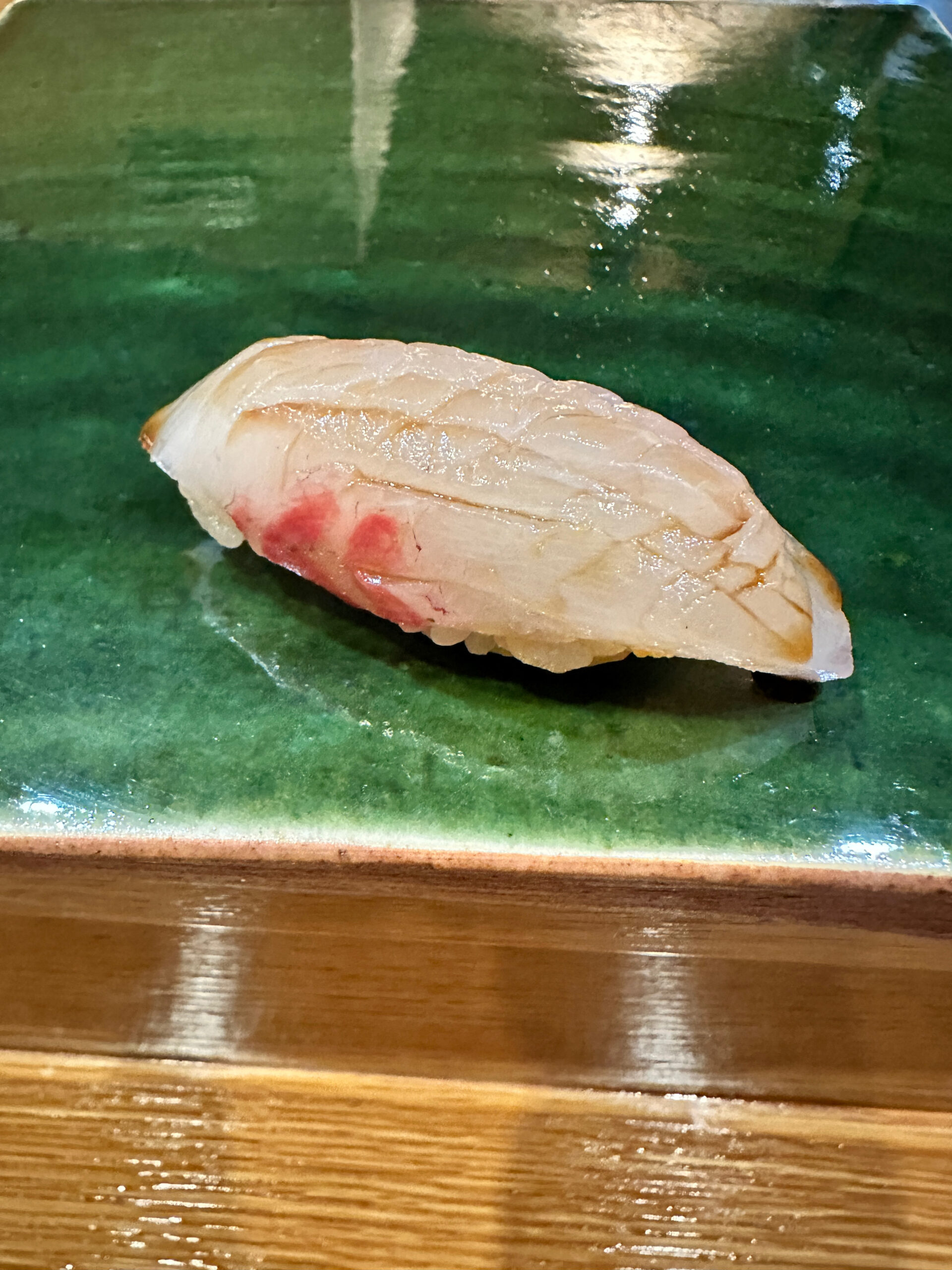
6: Shima Aji
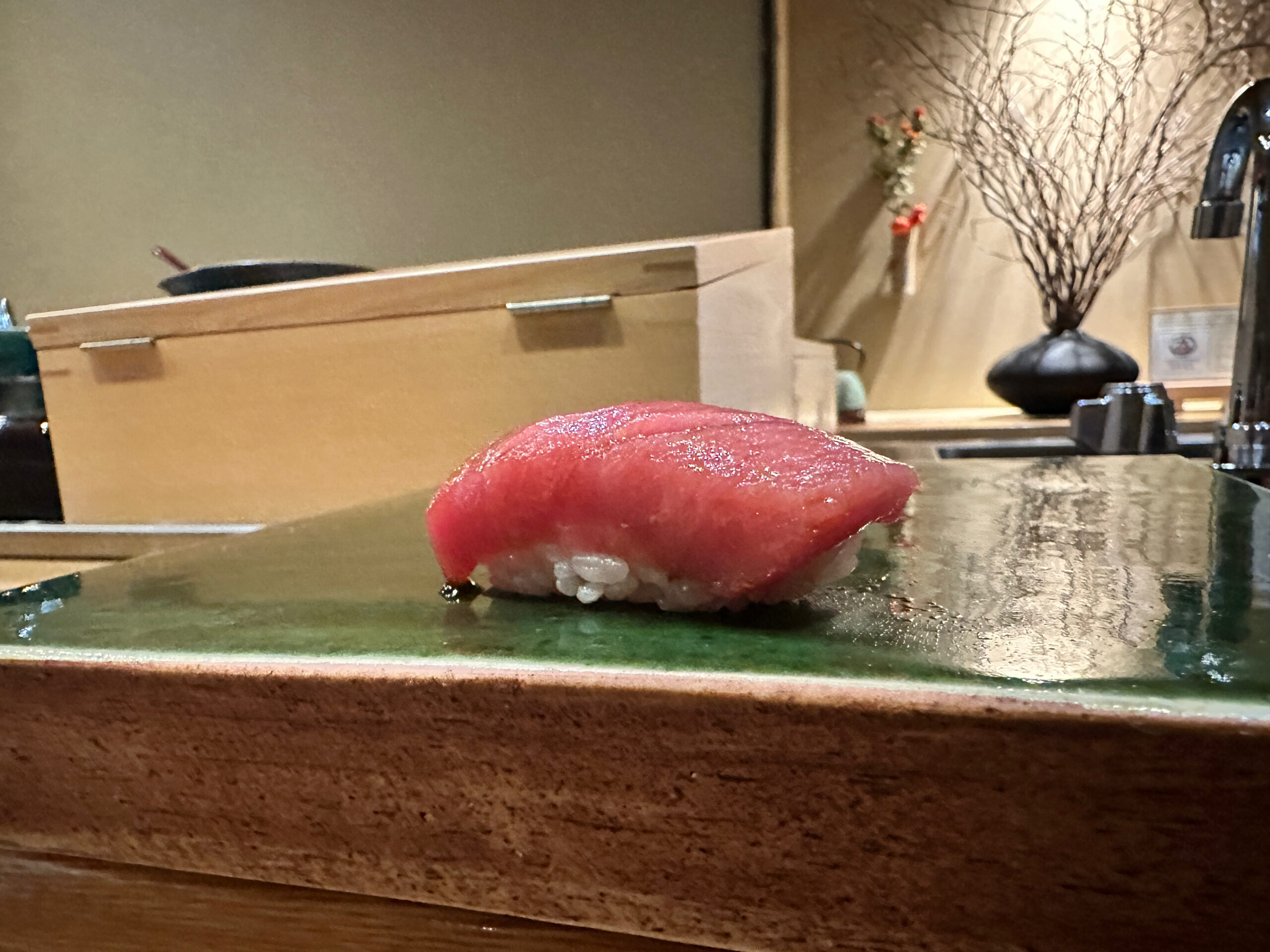
7: Chu Toro
And yes o toro had caviar. I can give a slight pass for the caviar because the knife work – check out the incisions – and the absence of the blowtorch.
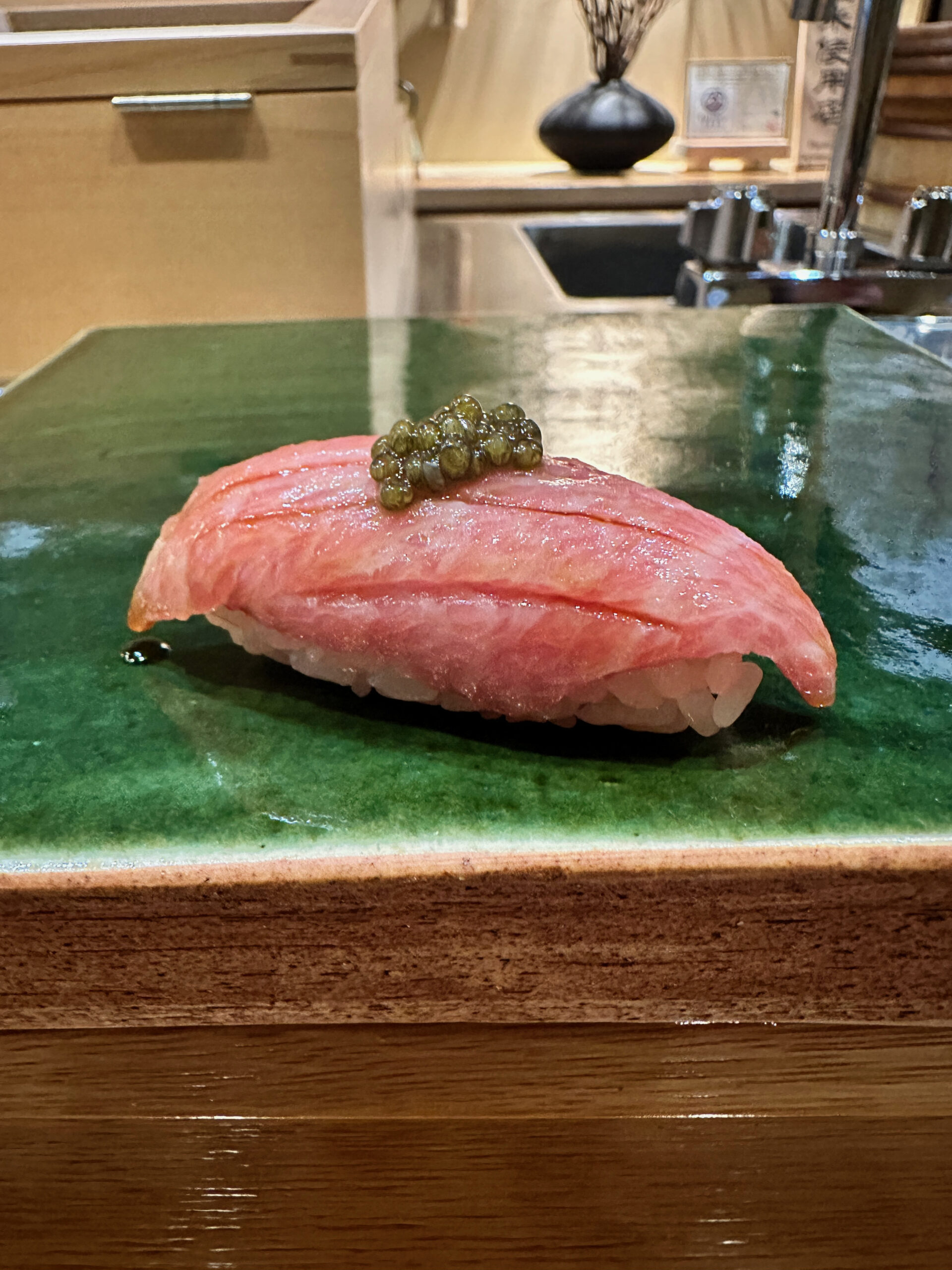
8: O Toro
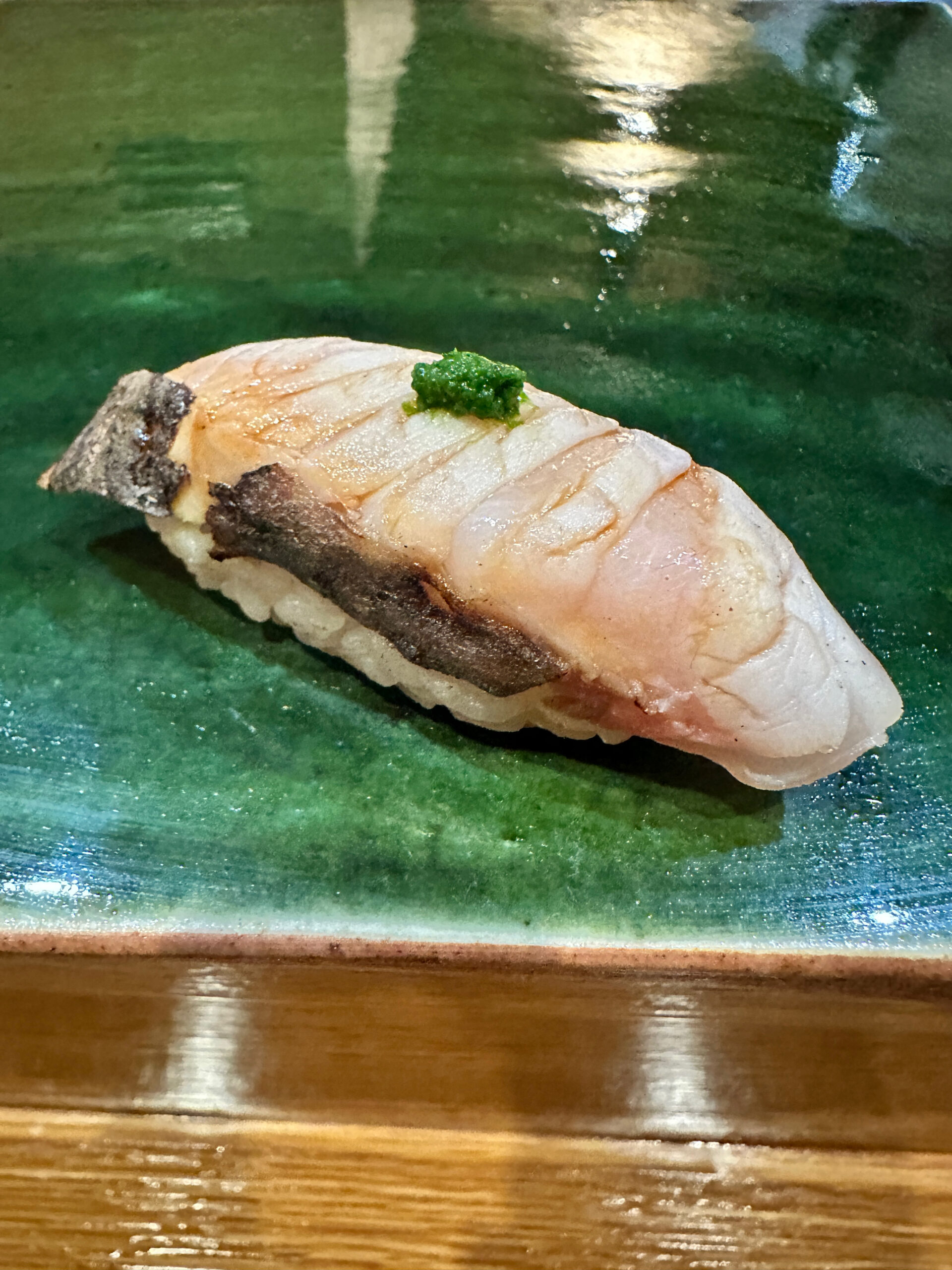
9: Sawara
Kuruma Ebi is served properly, in two pieces. I could practically cry. I’m not sure there’s an Omakase in New York under $150 serving Kuruma Ebi like this.
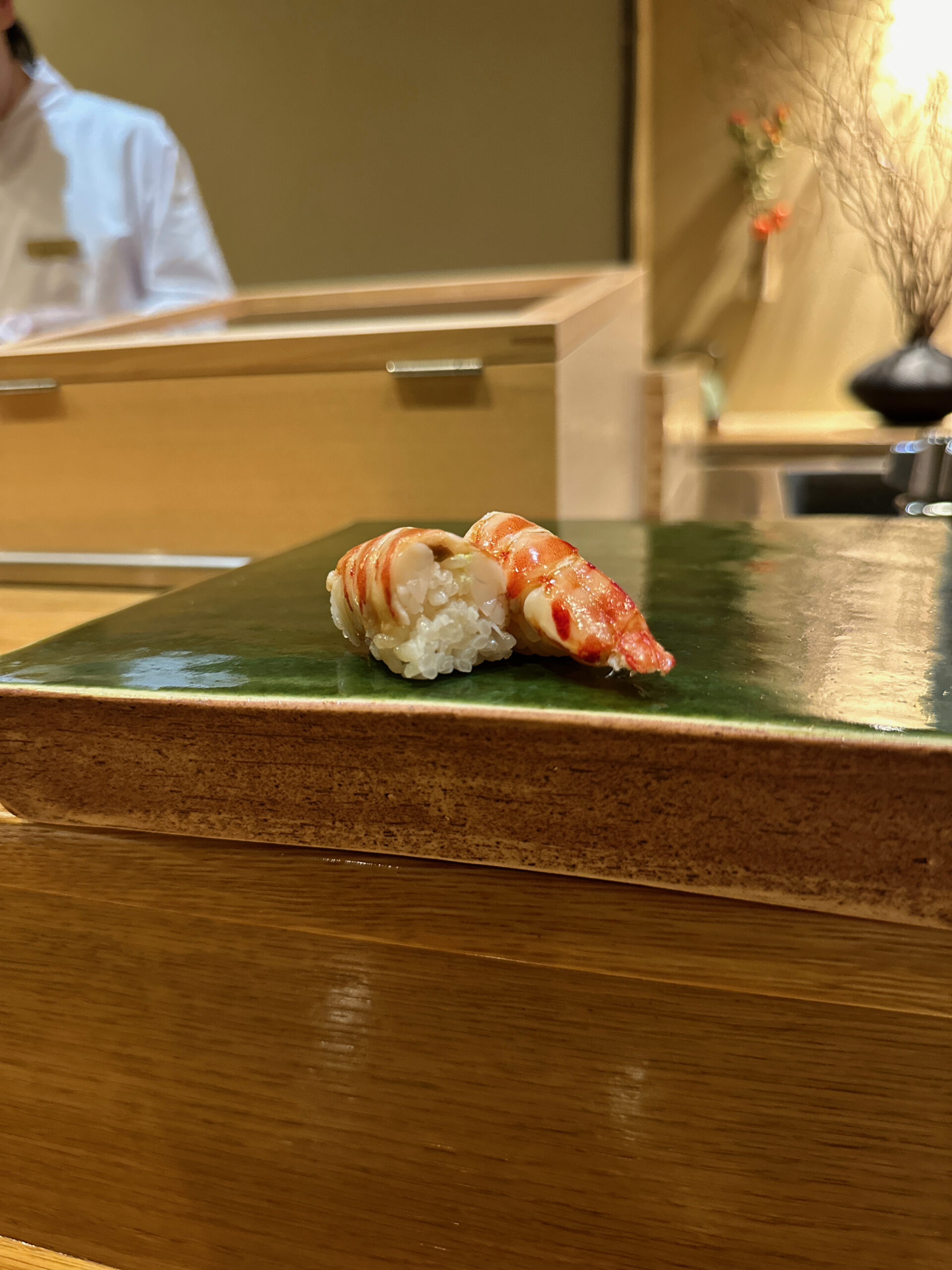
10: Kuruma Ebi
Zuwaigani is served as nigiri, minced first and packed densely enough to hold its shape as nigiri.
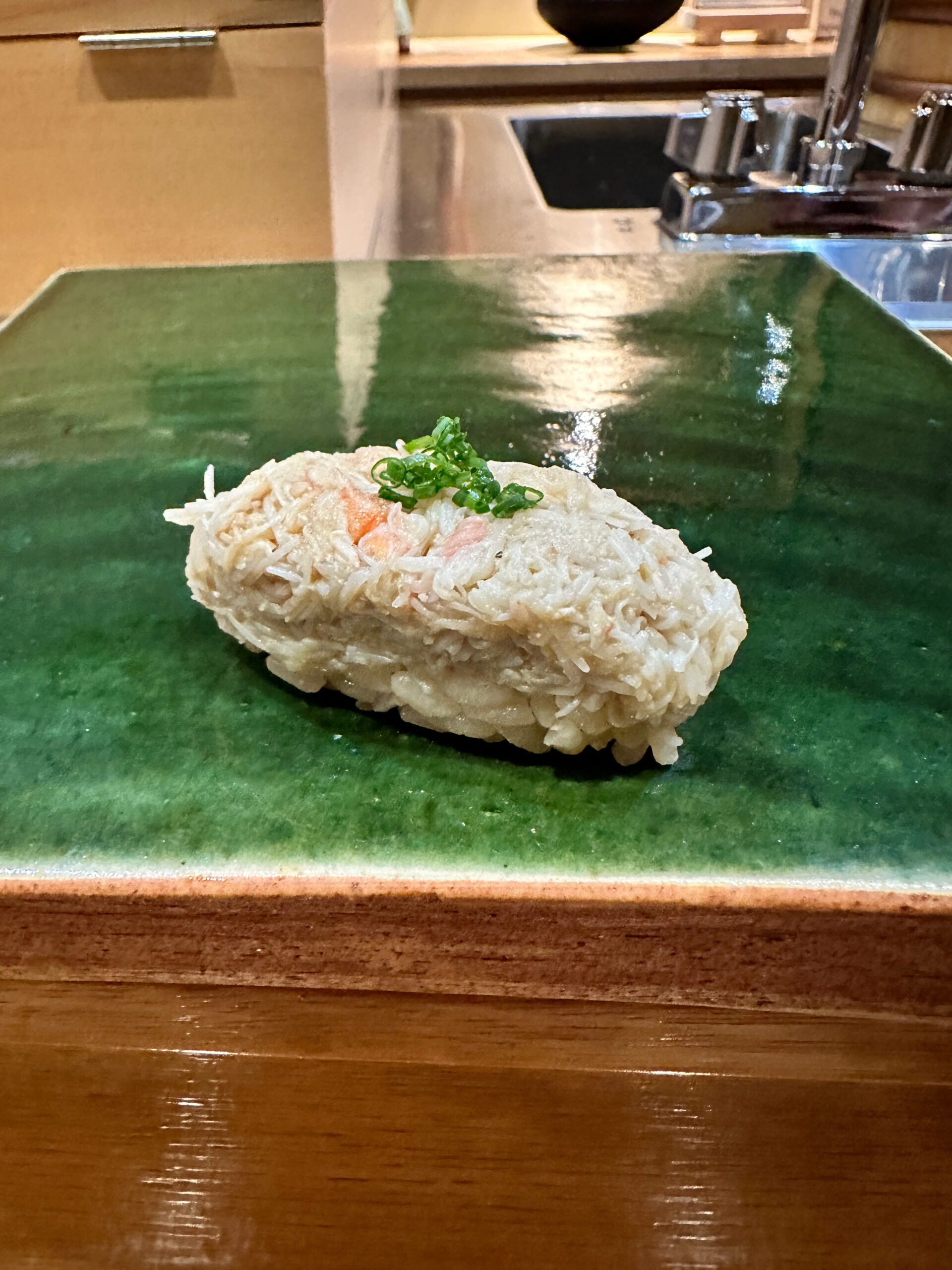
11: Zuwaigani
And Bafun Uni; the sushiya proudly shows the certificate of origin, but I don’t need anything more than my eyes and tongue.
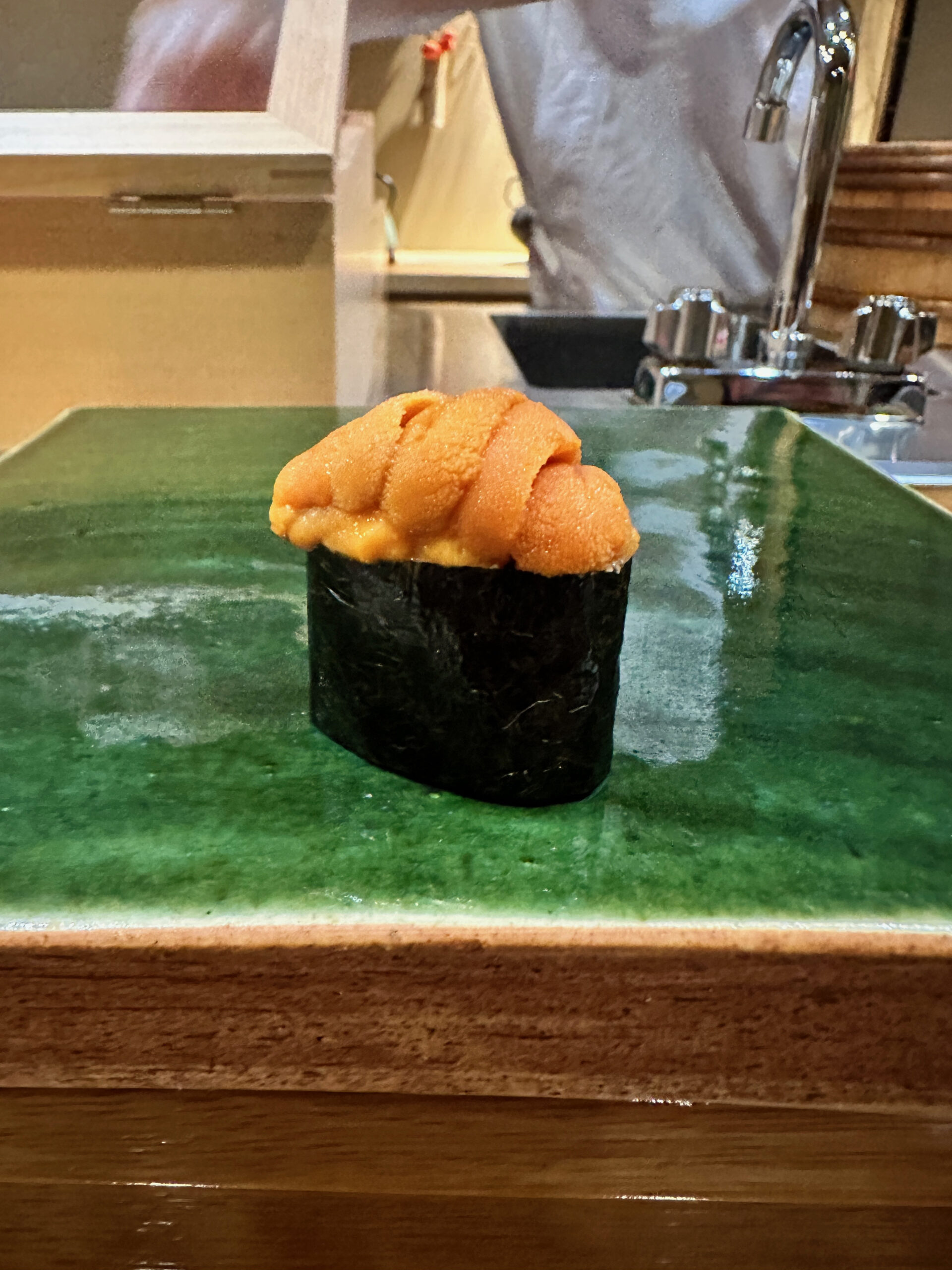
12: Bafun Uni
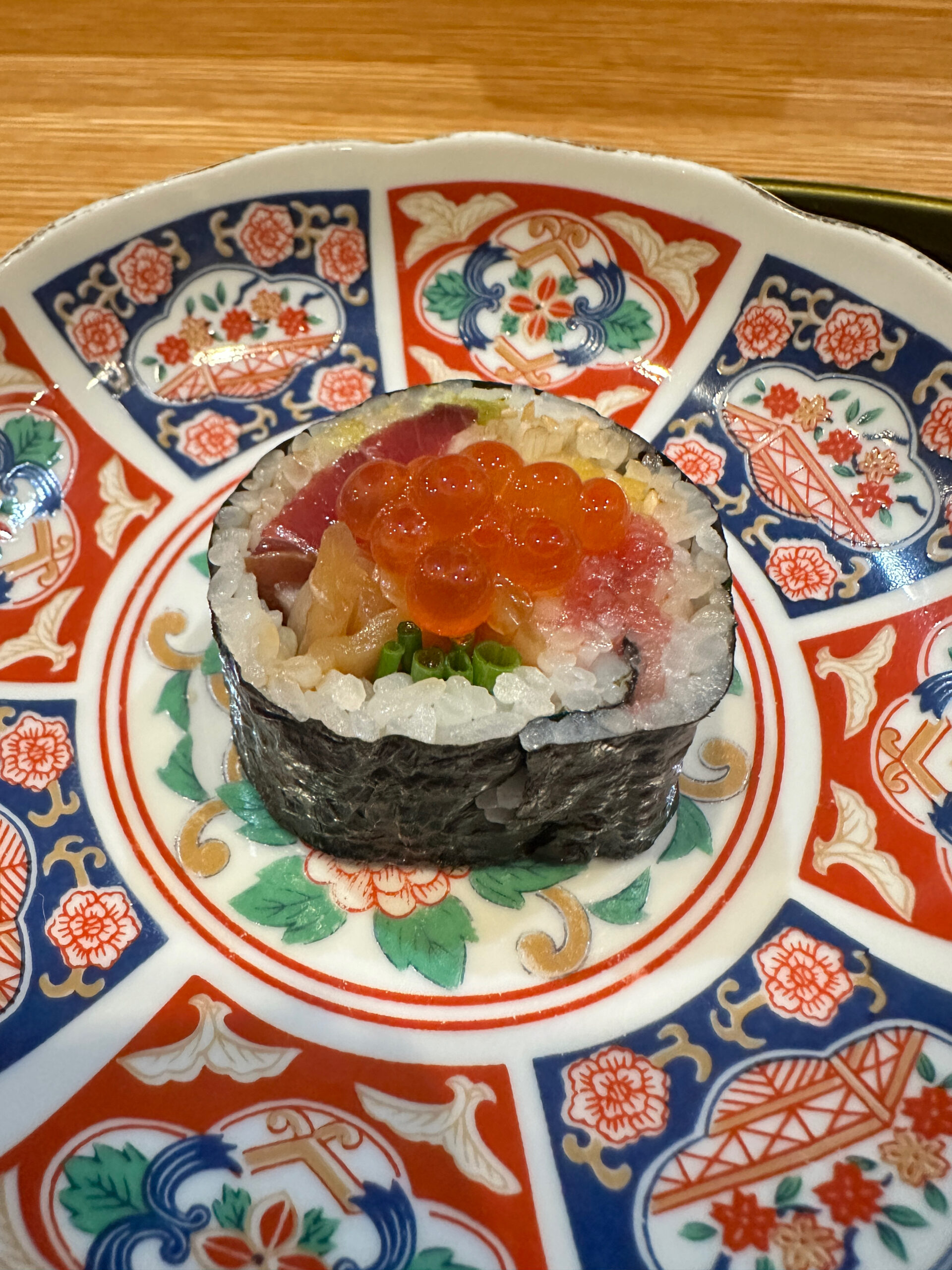
13: Futomaki (kanpyo, negi, katsuo, ikura, takuan and a few others)
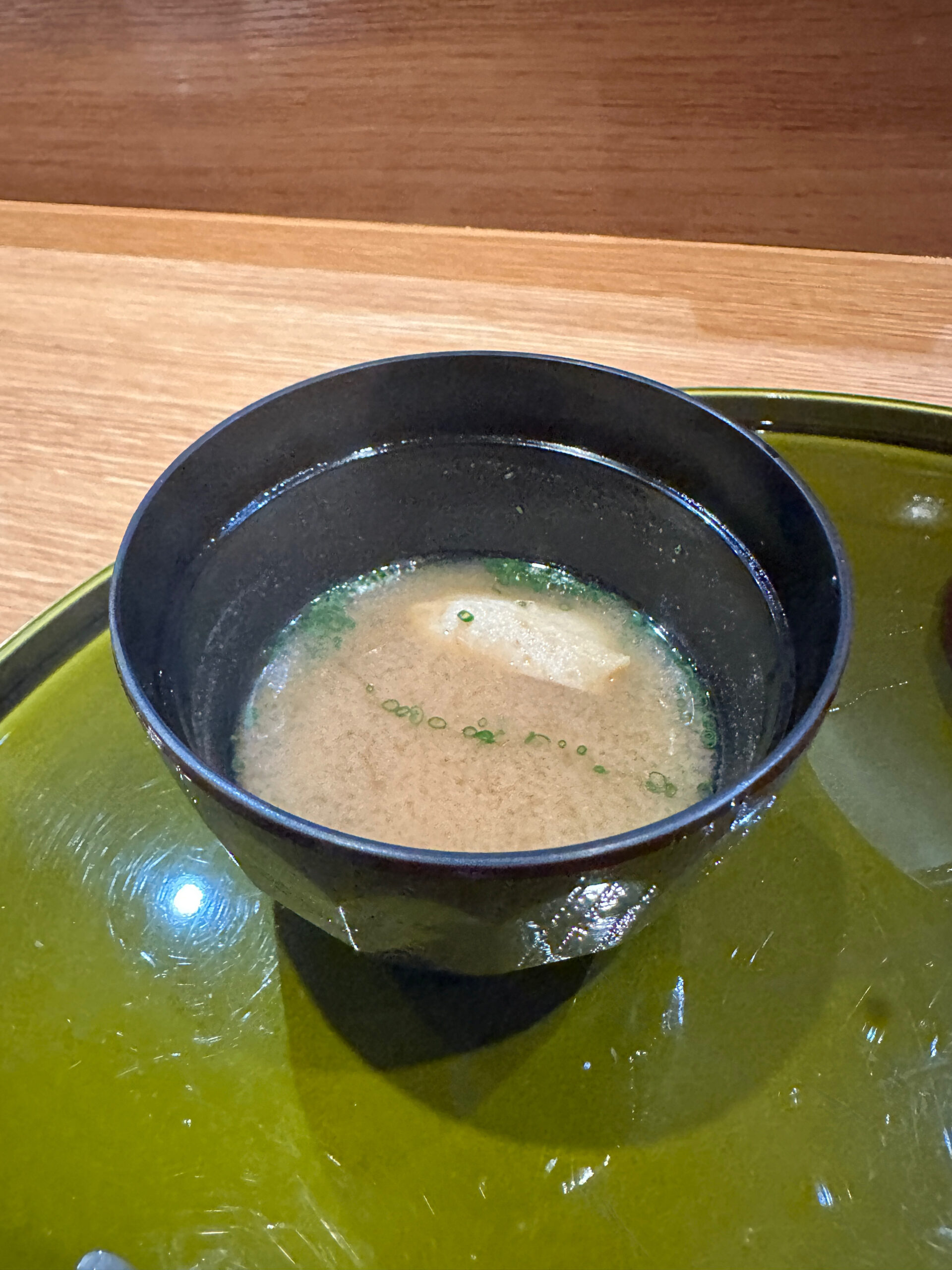
14: Miso
It’s just not the sushi but the choices
We ended the meal without salmon nigiri. If you’re unfamiliar, salmon as North Americans know it is not a classic edomae neta. North Americans love salmon – for good reason, it’s delicious – and sushiya here, especially at this price point, serve it accordingly. It takes skill and cajones to branch out.
If there was any criticism to be found, it’s that the rice faded towards the end of the meal. Time takes its toll on rice, and so the best sushiya will constantly replenish throughout.
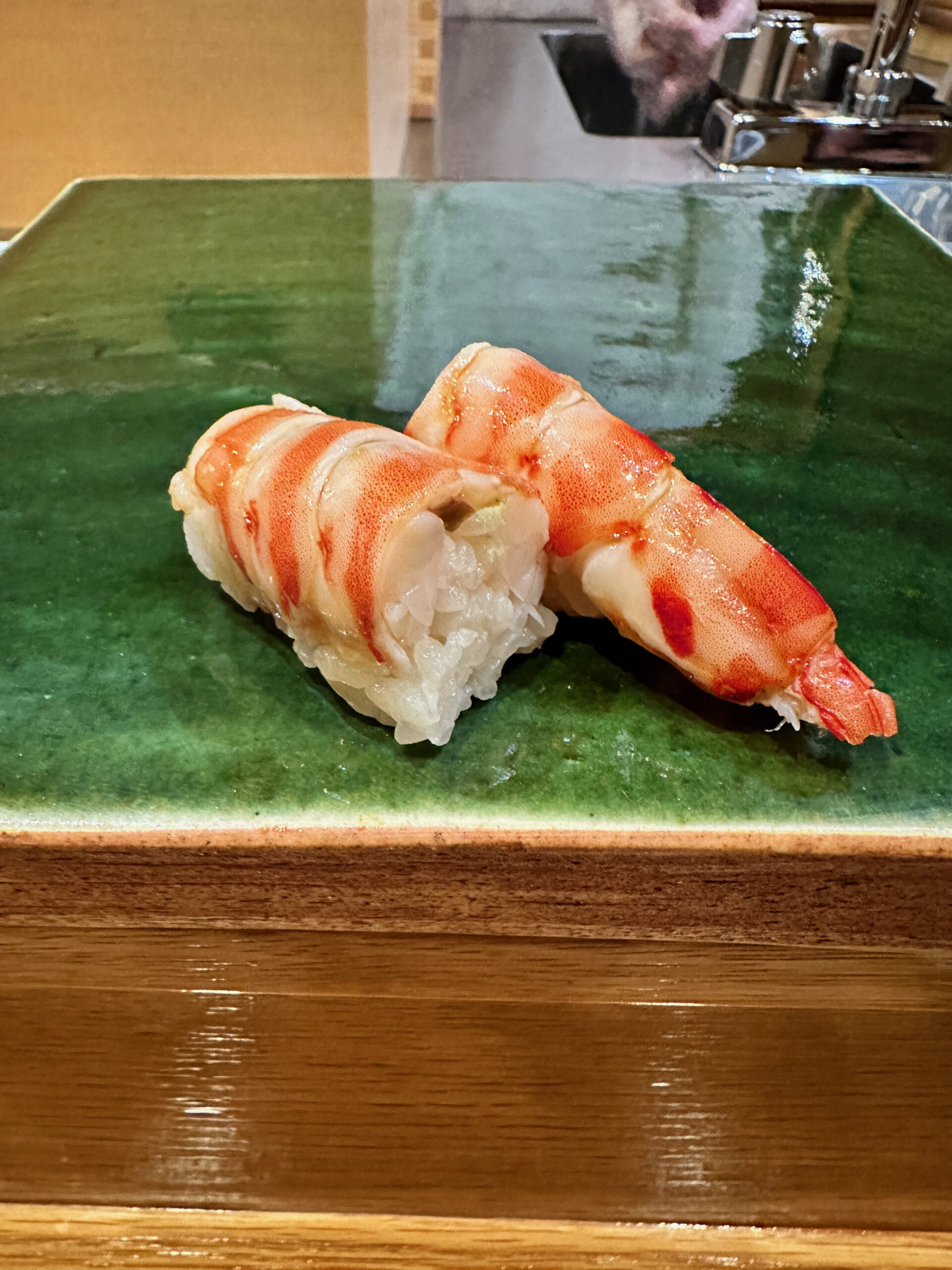
Food aside, Ouji has a soul
The main Itamae is Ben Chen (below, left). The name may not ring a bell but his pedigree should – he worked at Satsuki, a sushiya I loved – under NYC sushi legend Toshio Suzuki. I think the pictures do his waza (technique) justice. And the owner, Emily Li, was on site the entire meal, bouncing between seating the few customers (the sushiya was mostly empty) and signing for deliveries, handling a wholesaler arriving during dinner in a much kinder way than expected).
It’s probably why they wear nametags, though I’m not sure that’s necessary. This isn’t Wal Mart.
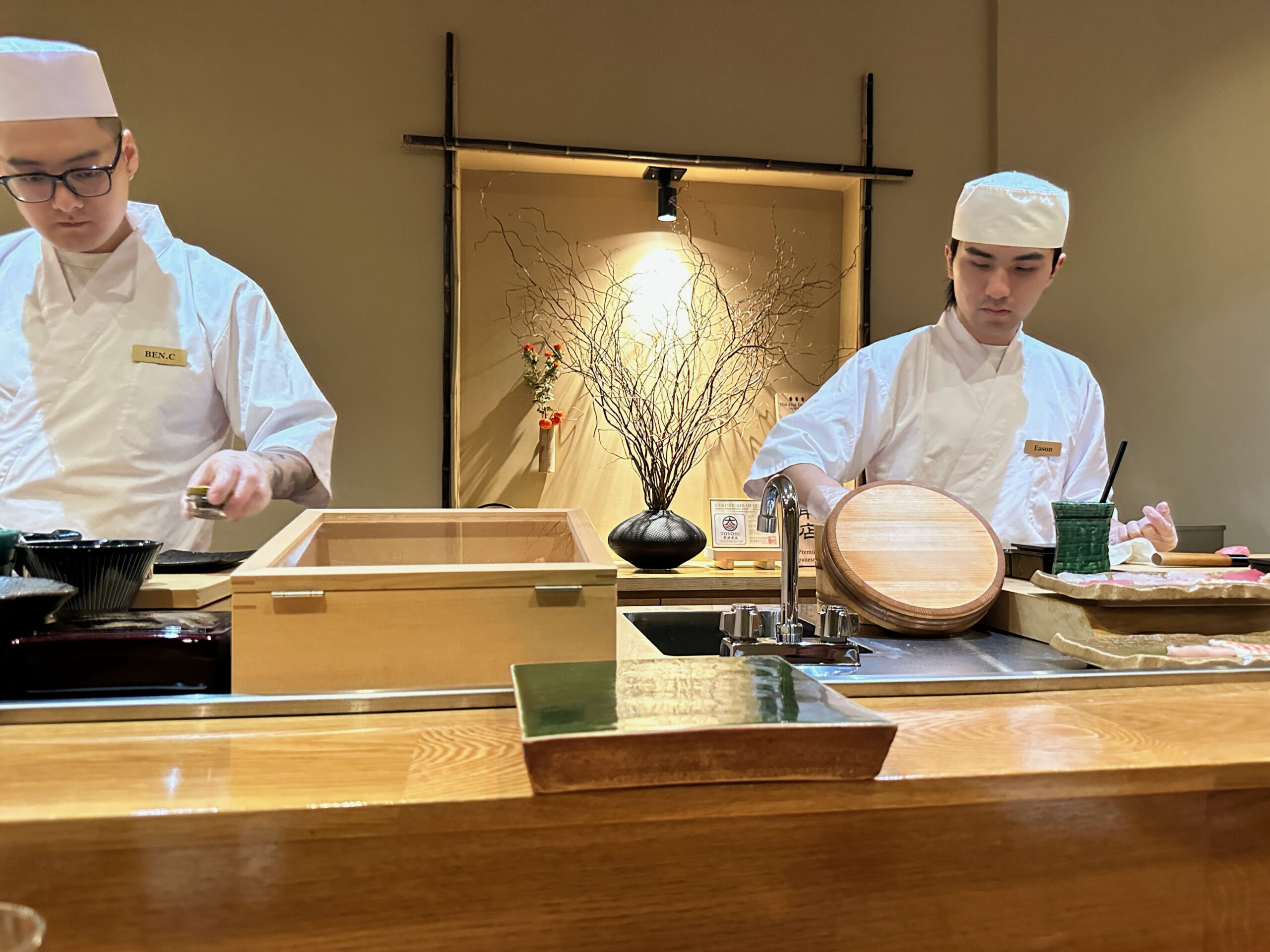
Regardless, Ouji wasn’t just one of the more pleasant surprises of 2024. It’s one of the best new sushiya I’ve visited in New York period. Immediate add to my recommendation list.
Recommended.
